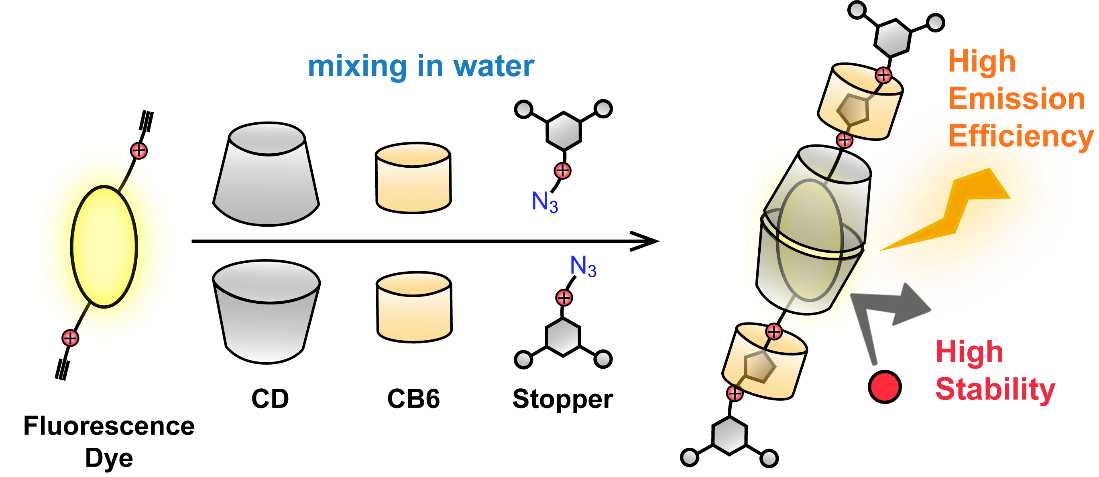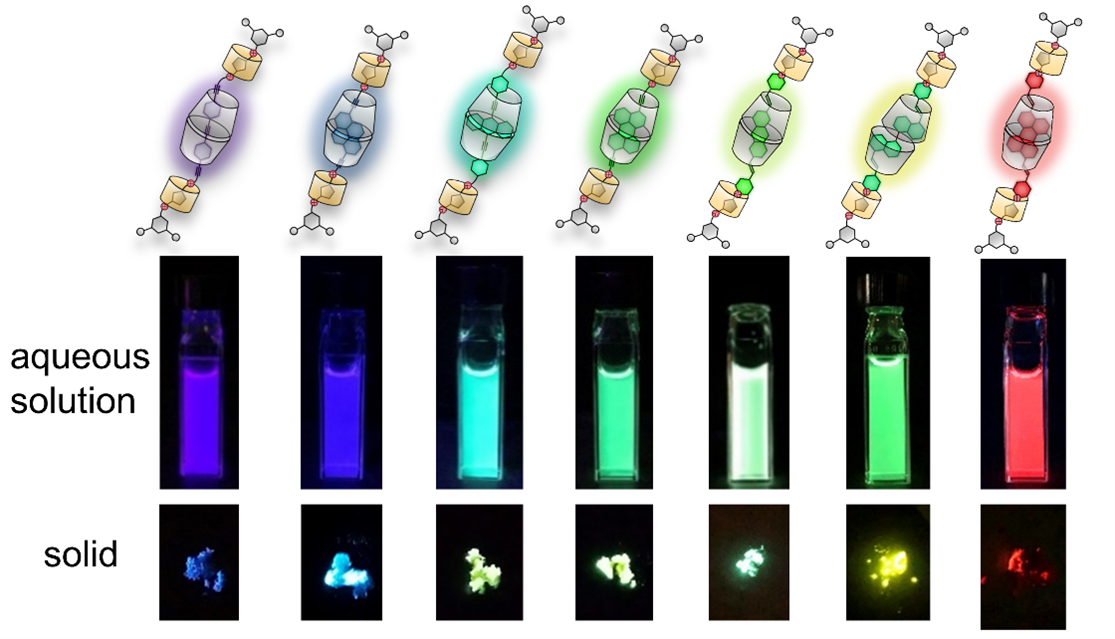Development of a New Method to Encapsulate Fluorescence Dyes for Improving their Emission Efficiencies, Solubilities, and Stabilities
Summary
A new method to encapsulate organic fluorescent dyes was developed by a research team led by Assistant Professor Yuki Ohishi, Professor Masahiko Inouye (Laboratory of Chemical Biology, Graduate School of Medicinal and Pharmaceutical Sciences), Associate Professor Satoru Yokoyama (Laboratory of Cancer Cell Biology, Graduate School of Medicinal and Pharmaceutical Sciences), and Lecturer Munetaka Iwamura (Laboratory of Photochemistry, Graduate School of Science and Engineering). This method can be applied to various dyes, and is expected to be applied in a wide range of fields from engineering to medicine. The results of this research were published online in “Advanced Optical Materials”, an authoritative European academic journal in the field of materials science, on August 26, 2023.

Background of the Research
Organic fluorescent dyes are used in a wide variety of fields, from engineering materials such as OLEDs to medical tools such as detecting tumor tissue. However, their poor solubility and instability are often issues in their application. The dyes tend to aggregate in water and in the solid state to lose its luminescent properties. In addition, the dyes react with chemical species to degrade when used for long periods of time.
Research Content and Achievements
In this research, we established a new method to encapsulate fluorescent dyes at the molecular level with cyclodextrins (CDs), as a way to overcome the drawbacks of organic fluorescent dyes. CDs act like bulletproof glass, and encapsulated fluorescent dyes can exhibit high emission efficiency and stability in water and in the solid state. In the newly established synthesis method, simply by mixing the fluorescent dye, two types of macrocyclic molecules, and a stopper molecule in water, all components spontaneously assemble to complete encapsulating. The key is a macrocyclic molecule called cucurbit[6]uril (CB6), which helps the spontaneous association of all components. The advantage of this method is that there is no need to add a catalyst. This method can be applied to a variety of fluorescent dyes, and this is expected to contribute to the development of next-generation dye materials.

Publication Details
Title
A Versatile Synthetic Method for Photophysically and Chemically Stable [5]Rotaxane-Type Fluorescence Dyes of Various Colors by Using a Cooperative Capture Strategy
Authors
Yuki Ohishi*, Kouhei, Nishioki, Yuta, Miyaoka, Keita Serizawa, Souma, Sugawara, Koichiro Hayashi, Daichi Inoue, Munetaka Iwamura, Satoru Yokoyama, Junya Chiba, Masahiko Inouye*
Published in
Advanced Optical Materials
2301457
DOI

